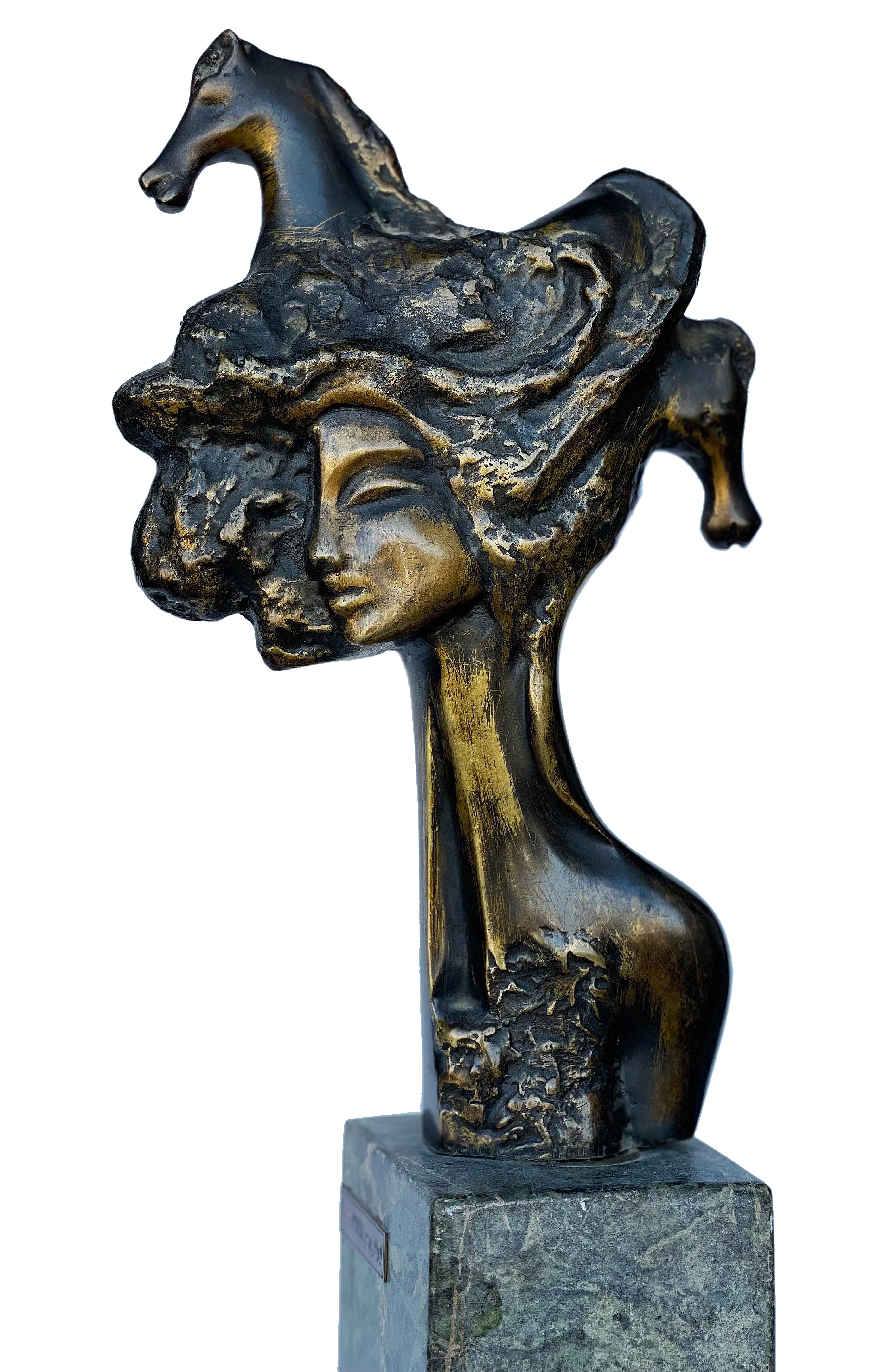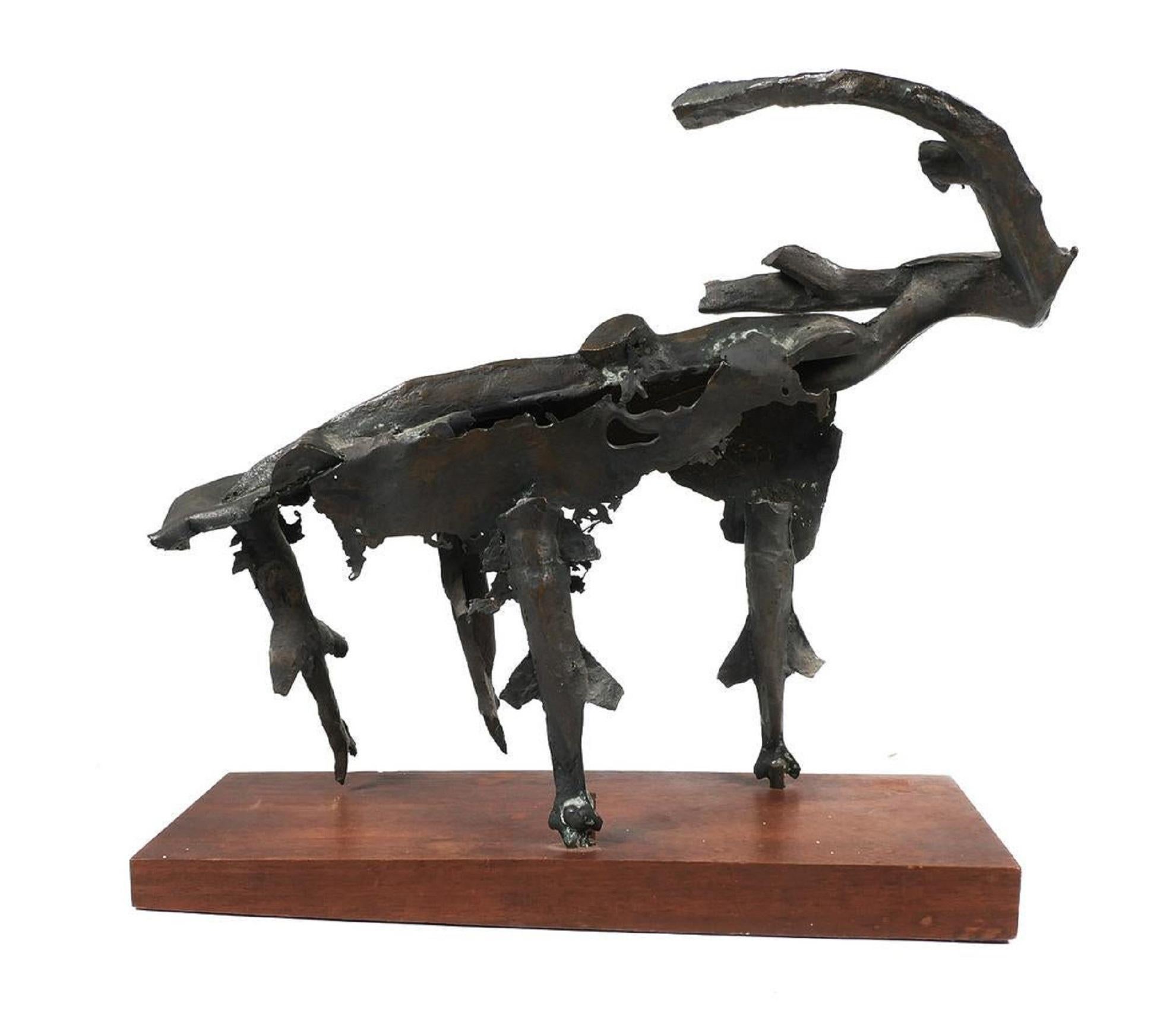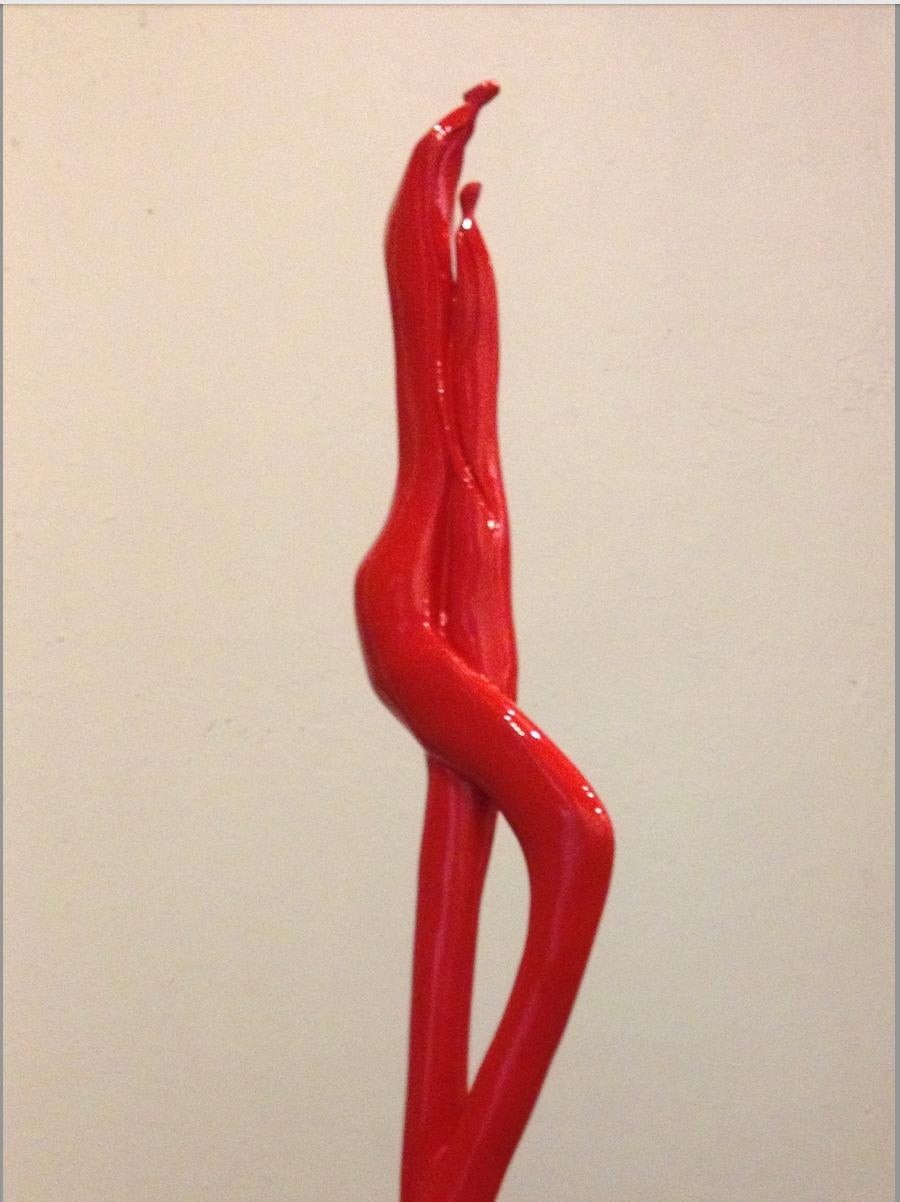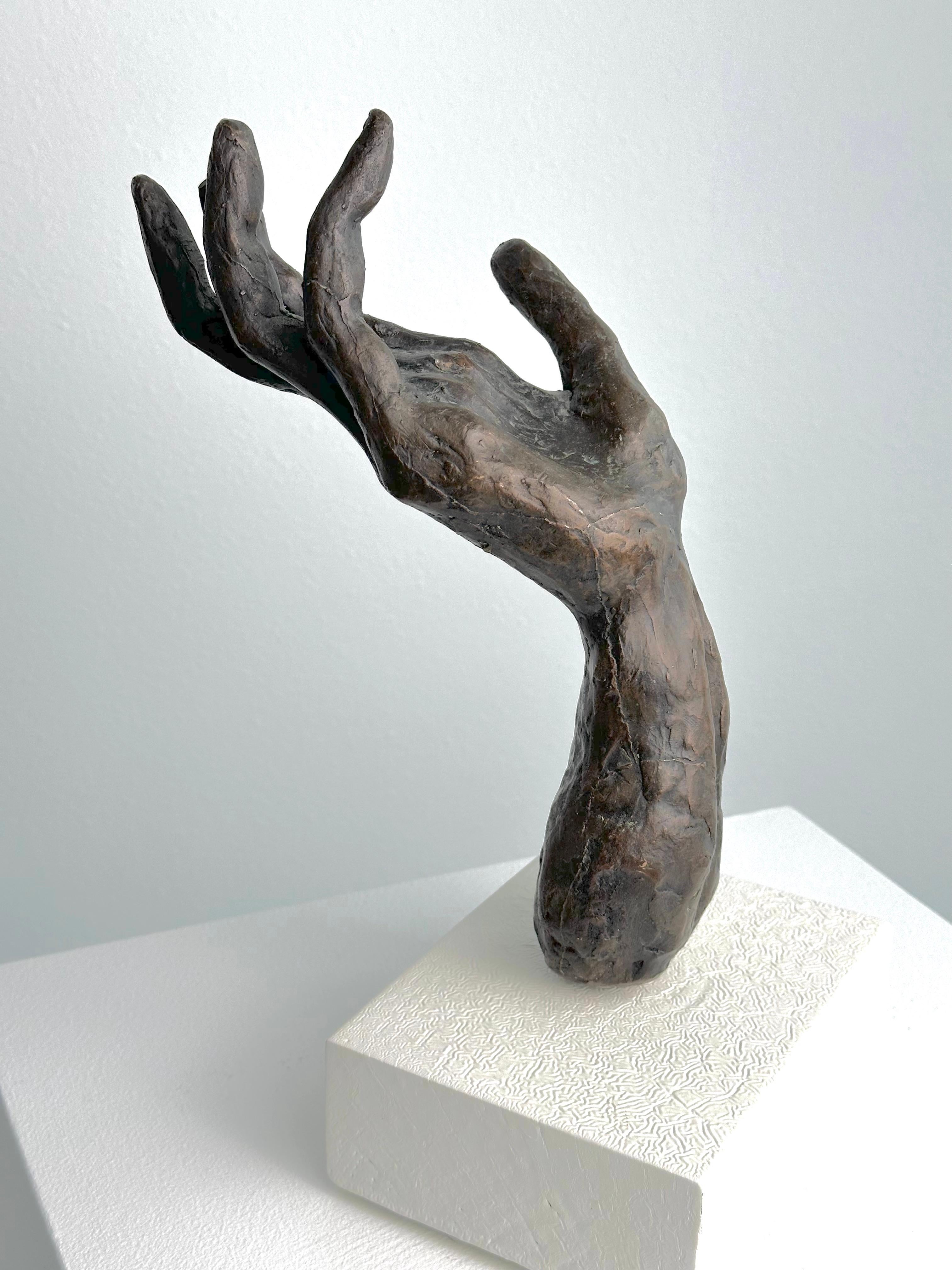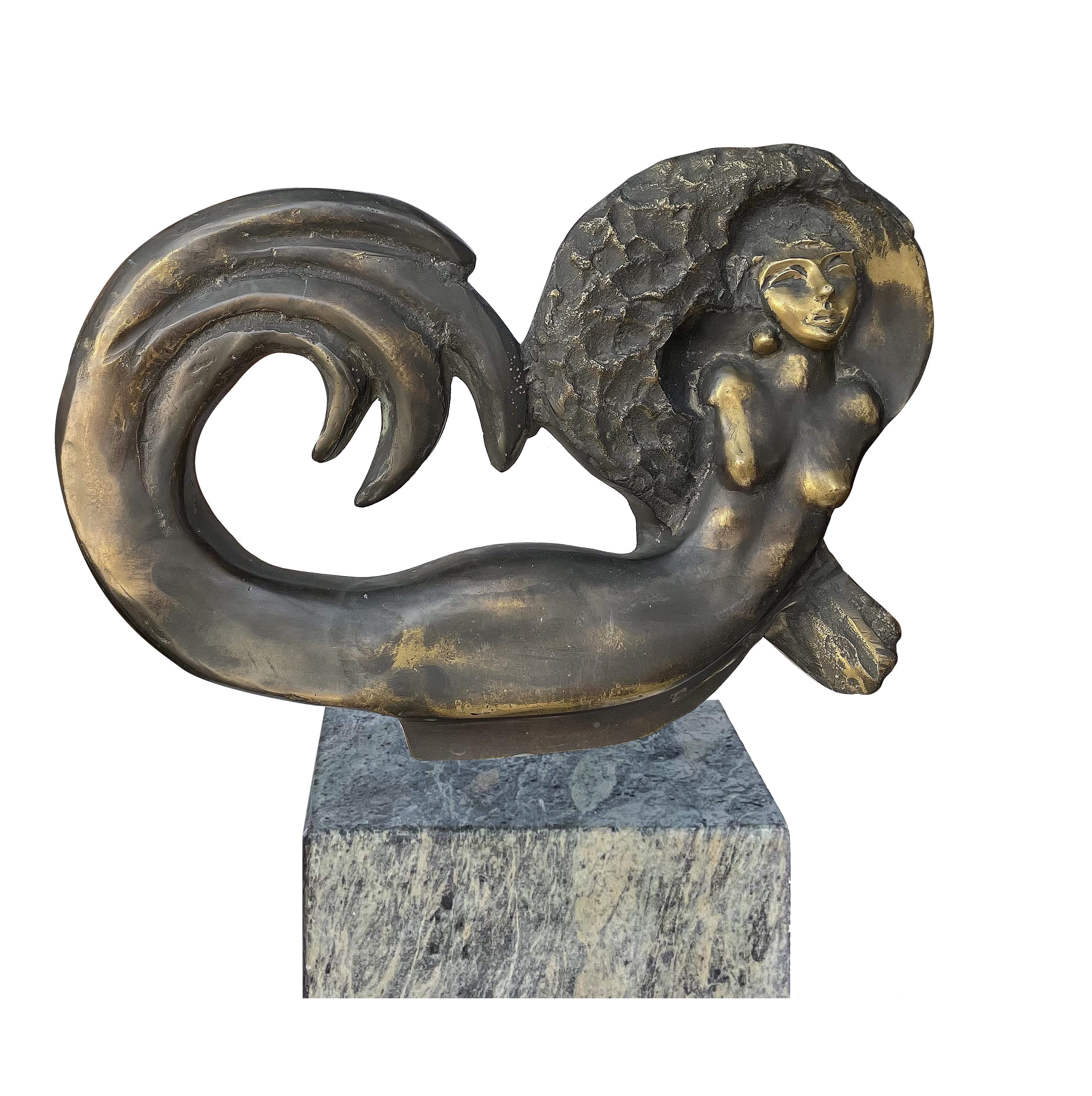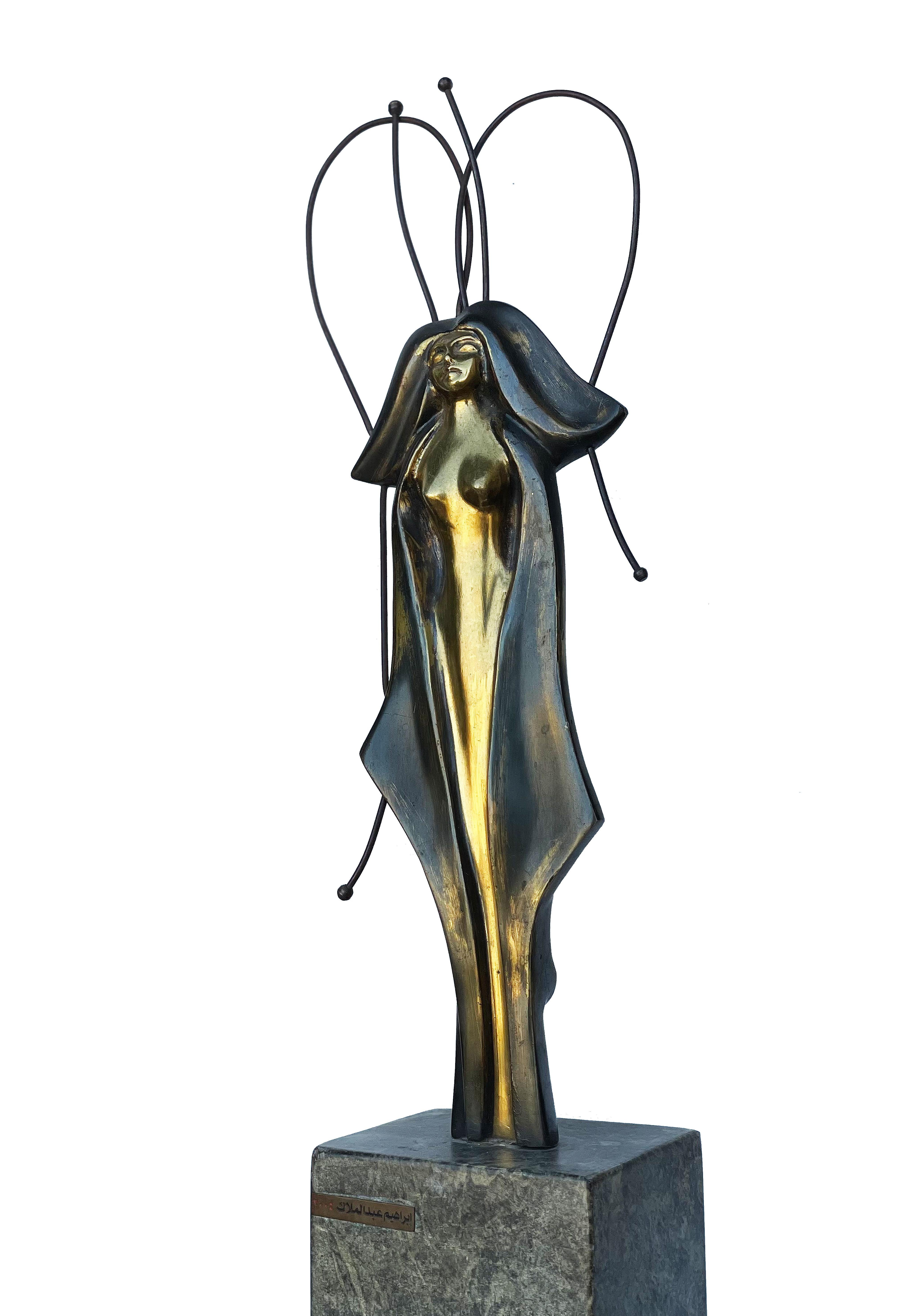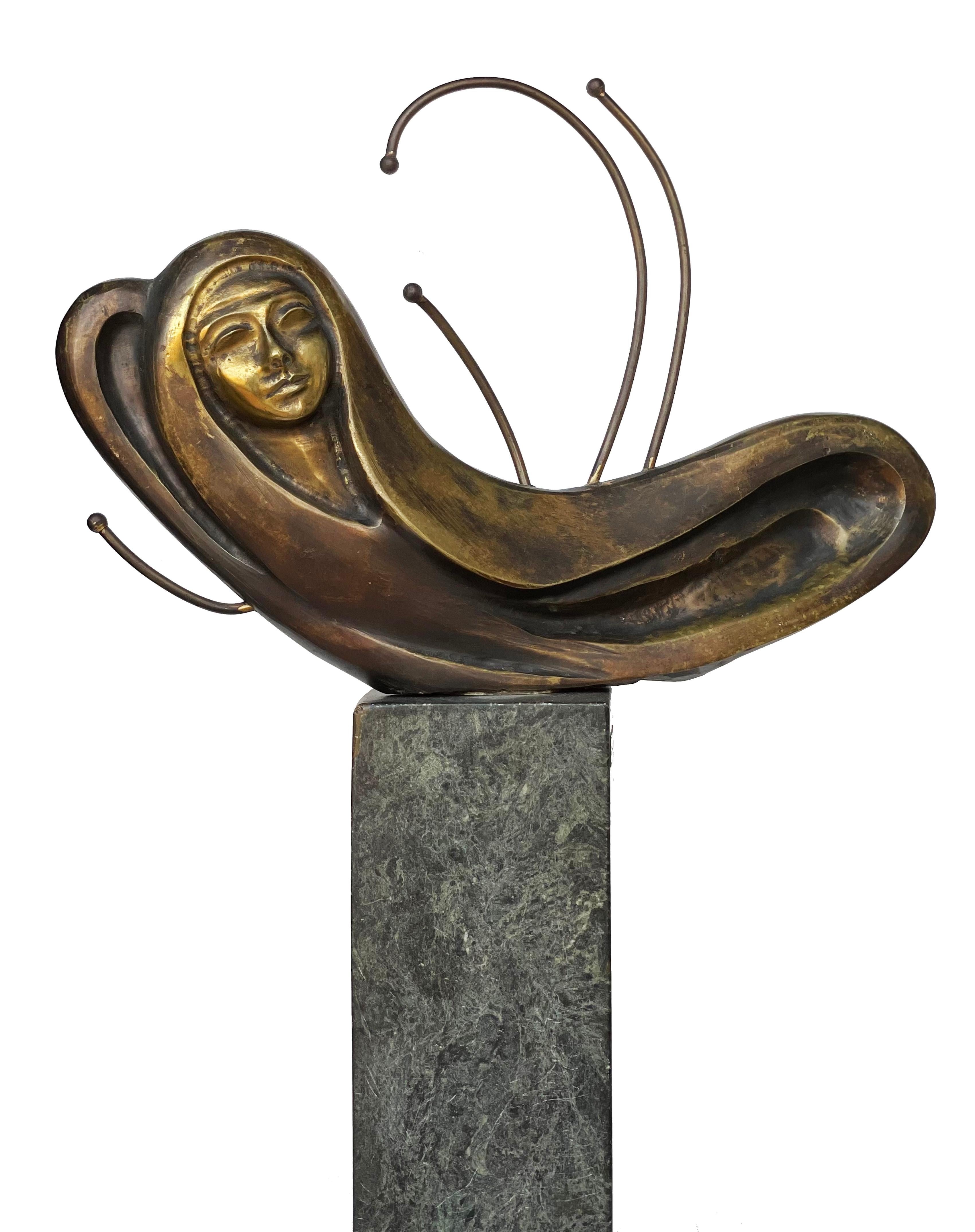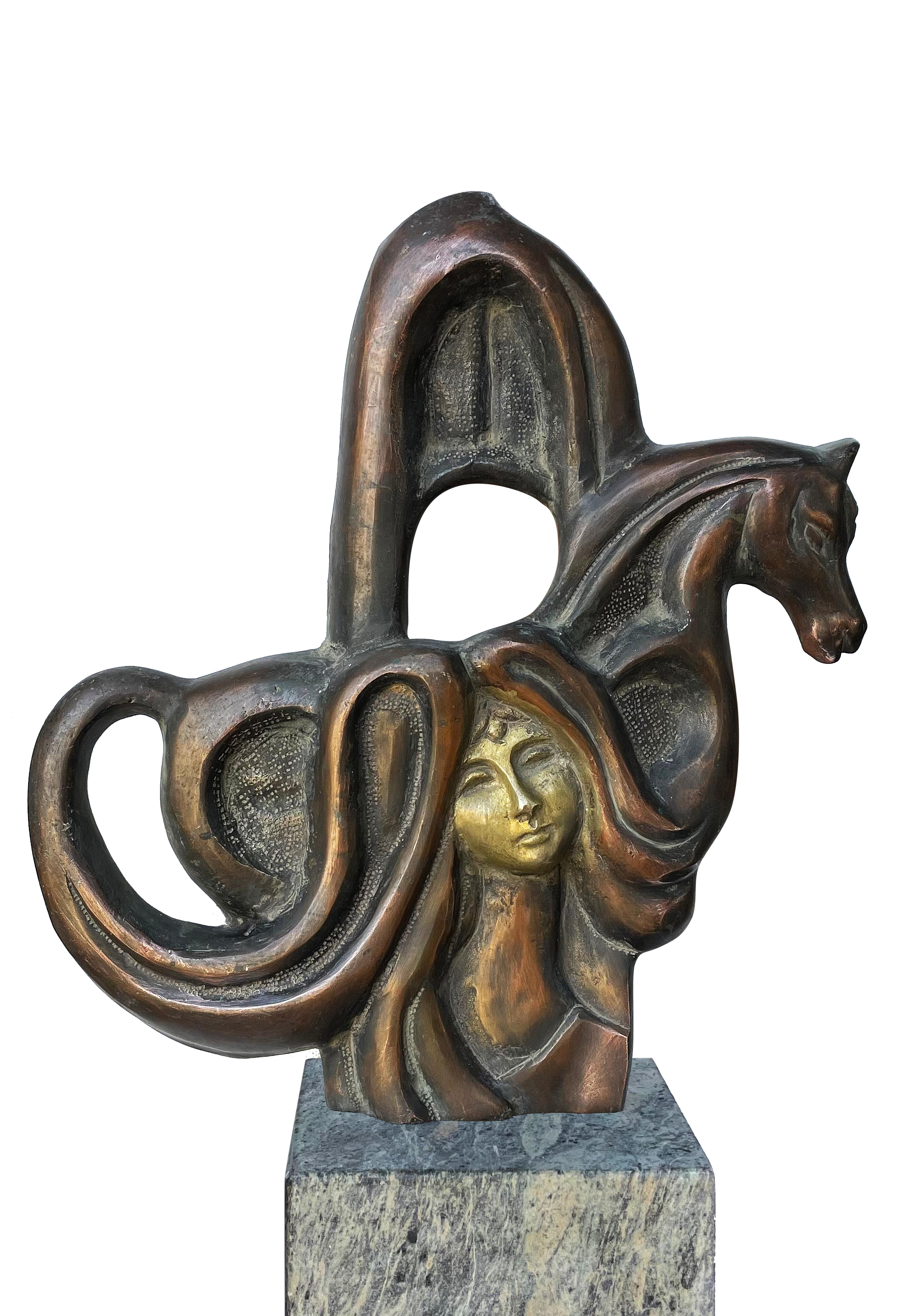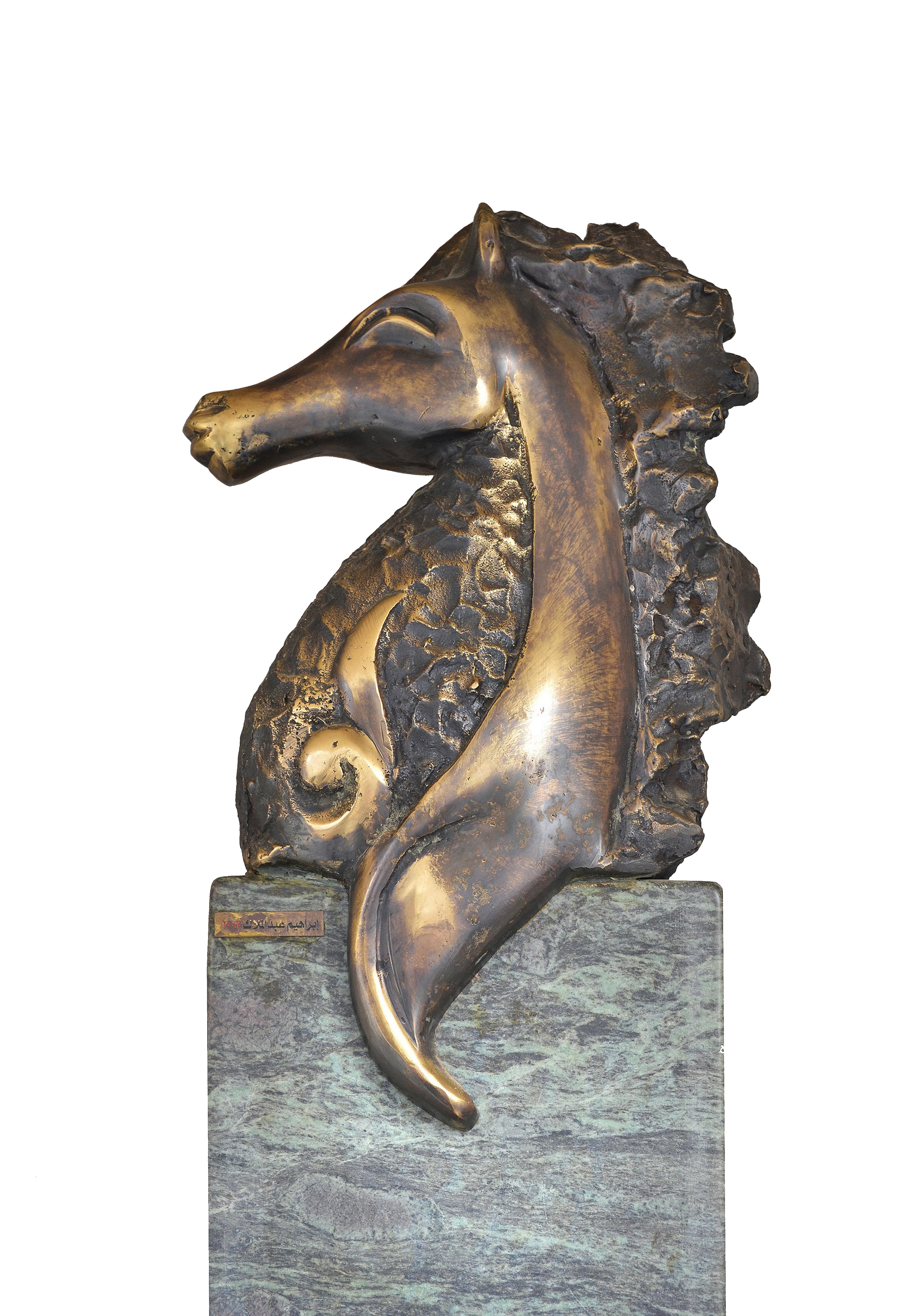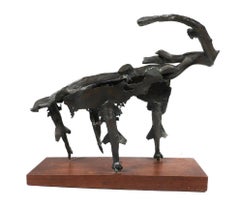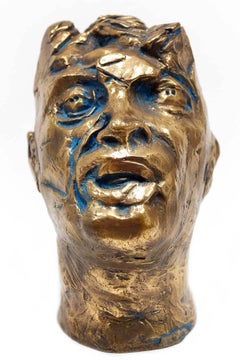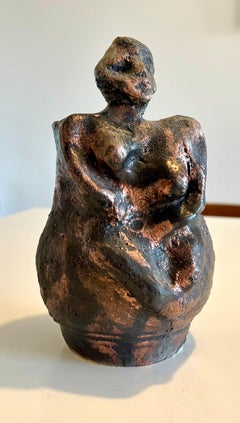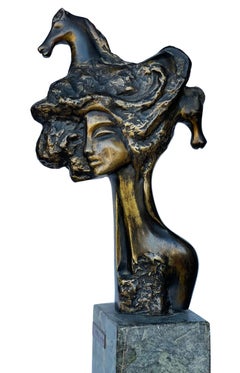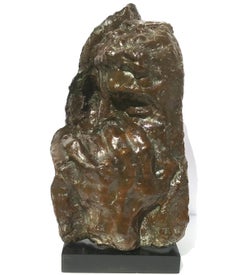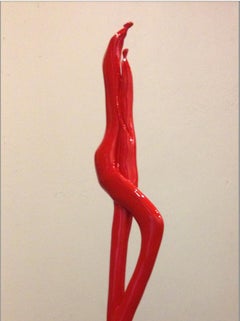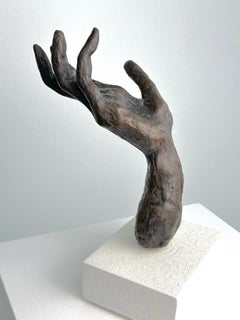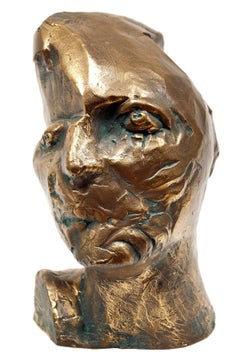
Untitled, Head Of An Artist, Avant-Garde Bronze Sculpture
Want more images or videos?
Request additional images or videos from the seller
1 of 7
Phillip PaviaUntitled, Head Of An Artist, Avant-Garde Bronze Sculpture1982
1982
About the Item
- Creator:Phillip Pavia (1912-2005, American)
- Creation Year:1982
- Dimensions:Height: 11.5 in (29.21 cm)Width: 8.5 in (21.59 cm)Depth: 7 in (17.78 cm)
- Medium:
- Movement & Style:
- Period:
- Condition:
- Gallery Location:Surfside, FL
- Reference Number:1stDibs: LU3822372311
About the Seller
4.9
Platinum Seller
Premium sellers with a 4.7+ rating and 24-hour response times
Established in 1995
1stDibs seller since 2014
1,753 sales on 1stDibs
Typical response time: 1 hour
Authenticity Guarantee
In the unlikely event there’s an issue with an item’s authenticity, contact us within 1 year for a full refund. DetailsMoney-Back Guarantee
If your item is not as described, is damaged in transit, or does not arrive, contact us within 7 days for a full refund. Details24-Hour Cancellation
You have a 24-hour grace period in which to reconsider your purchase, with no questions asked.Vetted Professional Sellers
Our world-class sellers must adhere to strict standards for service and quality, maintaining the integrity of our listings.Price-Match Guarantee
If you find that a seller listed the same item for a lower price elsewhere, we’ll match it.Trusted Global Delivery
Our best-in-class carrier network provides specialized shipping options worldwide, including custom delivery.More From This Seller
View AllBronze Sculpture Abstract Brutalist Goat or Ram WPA Artist Mounted on Base
By Benedict Michael Tatti
Located in Surfside, FL
Benedict Tatti (1917-1993) worked in New York city as a sculptor, painter, educator, and video artist. He studied stone and wood carving under Louis Slobodkin at the Roerich Museum. He later attended the Leonardo da Vinci School of Art studying under Attilio Piccirelli. In l939 he taught adult classes with the Teachers Project of the WPA and attended the Art Students League for three and a half years on full scholarship. He studied under William Zorach and Ossip Zadkine and later became Zorach’s assistant. Later in his career, he attended the Hans Hofmann School of Fine Arts. During World War II, Tatti served in the United States Army Air Force, where he spent three years assigned to variety of projects. In 1948, Benedict Tatti married Adele Rosenberg in New York City.
Throughout his career, Tatti continuously experimented with various media. From 1952-1963, Tatti executed sculptural models of architectural and consumer products for the industrial designers, Raymond Loewy Associates; later he became a color consultant for the firm. In the 1960s, influenced by the Abstract Expressionists, Tatti turned from carving directly in wood and stone to creating assemblage architecture sculptures, using bronze metal and other industrial materials.
He was included in the important show "Aspects de la Sculpture Americaine", at Galerie Claude Bernard Paris, France, in October 1960 along with Ibram Lassaw, Theodore Roszak, David Smith, Louise Bourgeois, Danese Corey, Dorothy Dehner, Lin Emery, Lily Ente, David Hayes, Louise Nevelson, Tony Rosenthal, Richard Stankiewicz, Sam Szafran...
Category
Mid-20th Century Abstract Expressionist Abstract Sculptures
Materials
Bronze
Untitled, Head Of An Artist, Avant-Garde Bronze Sculpture
By Phillip Pavia
Located in Surfside, FL
As an artist and writer, Philip Pavia was a committed member of the Abstract Art community throughout his long, distinguished career. Pavia was active in the art world until his death in 2005 and received immense critical praise for his artistic and literary contributions. Recognized for his signature work The Ides of March, he produced monumental pieces that alternated between figurative and abstract styles. While he was a dedicated sculptor, Pavia extended that passion into writing and published It is: A Magazine for Abstract Art.
Born in 1911 of Provencal-Italian descent, the Stratford, Connecticut native received early inspiration from his father, a professional stone cutter. Pavia's sculptures are characterized by rough, chiseled bronze and marble, his father's trade was no doubt a significant influence. In fact, by 1934, his father was so enthusiastic about his son's passion that he encouraged young Philip to study at the Academia delle Belle Arti in Florence, Italy.
Before his studies in Europe, Pavia was briefly a student at Yale University but quickly dropped out and enrolled at New York's Art Student League. While attending school, he befriended artists Jackson Pollock and Arshile Gorky. All three were to become major players of the vibrant new Abstract Art movement. At his father's advice, Pavia embarked on his European experience and was introduced to other influential artists of his time. Traveling between Italy and Paris, Pavia met John Ferren...
Category
20th Century Abstract Expressionist Figurative Sculptures
Materials
Bronze
Untitled, Head Of An Artist, Avant-Garde Bronze Sculpture
By Phillip Pavia
Located in Surfside, FL
This is a bronze cast sculpture by Philip Pavia is part of his series of "Imaginary Portraits from the Club" , a one-man exhibition at Max Protetch Gallery, New York in 1982. The approach at rendering the figure is grotesque, and the facial features have been severely distorted to the point were the portrait becomes an abstract interpretation of the subject.
As an artist and writer, Philip Pavia was a committed member of the Abstract Art community throughout his long, distinguished career. Pavia was active in the art world until his death in 2005 and received immense critical praise for his artistic and literary contributions. Recognized for his signature work The Ides of March...
Category
20th Century Abstract Expressionist Figurative Sculptures
Materials
Bronze
Brutalist Ceramic Sculpture Vase Bronze Lustre FInish California Expressionist
By Jenik Cook
Located in Surfside, FL
Jenik Cook
Handmade ceramic vase or pot sculpture
Hand signed by the artist.
Fired clay with a luster bronze painted finish
Jenik Esterm Simonian Cook is a painter and ceramicist ...
Category
20th Century Abstract Expressionist Figurative Sculptures
Materials
Ceramic, Luster, Paint
Karel Appel Colorful Expressionist Hand Painted Wood Cobra Sculpture Pop Art
By Karel Appel
Located in Surfside, FL
This is an original wooden sculpture with hand painting on both sides. it does not appear to be signed or numbered and does not currently have any label. I believe this might be the ...
Category
1970s Abstract Expressionist Abstract Sculptures
Materials
Wood, Paint
Large Latin American Modernist Bronze Abstract Cuban Master Roberto Estopinan
By Roberto Estopiñan
Located in Surfside, FL
Roberto Estopinan, Cuban, 1920 - 2015
Dimensions: 24.5" wide x 13" high plus 6" high base.
Roberto Estopiñán (1921–2015) was a Cuban American sculptor known for his sculptures of the human form, including political prisoners. Born in Camaguey, Cuba, he lived in the United States for over fifty years. His works are held by major institutions such as the Museum of Modern Art, the Whitney Museum and the Smithsonian Museum of American Art.
Roberto Gabriel Estopinan, a sculptor, draftsman, and printmaker, was born in Havana, Cuba on March 18, 1921. Estopiñán enrolled at the San Alejandro Academy when he was just 14 years old and became the protegé and studio assistant of the sculptor Juan José Sicre. After graduation he traveled first to Mexico, where he met and befriended Francisco Zuniga, and studied Pre-Columbian sculpture. In 1949 he traveled to Europe, visiting England, France and Italy. In these trips he encountered the sculpture of Henry Moore and Marino Marini, and their humanistic yet formal visions would be influential on Estopinan's work. Estopiñán was a pioneer of direct carvings using wood and of welding techniques in Latin America. Throughout the 1950s, Estopiñán received important prizes at various national exhibitions in Havana. In 1953 he was the only semi-finalist from Latin America at the Tate Gallery's international sculpture competition for a Monument to the Unknown Political Prisoner. In 1961, the artist moved to New York, where he resided until 2002.
Roberto Gabriel Estopiñán a Cuban emigre sculptor who emigrated to exile in the United States not long after Fidel Castro’s revolution in 1959, is considered one of Latin America’s most important 20th-century artists. His work, which includes drawings and prints as well as sculptures in wood and bronze, is in the collections of New York’s Museum of Modern Art, the Smithsonian’s American Art Museum, the Art Institute of Chicago, and the Detroit Institute of Art, among many locations. He is best known for his stark, disturbing renderings of political prisoners, the fruit of his own experiences as a dissident under both Castro and his predecessor, the dictator Fulgencio Batista, and for his representations of the female torso that can remind viewers of both classical statuary and the high-modern, abstractly elongated work of Henry Moore.mHe was born in Havana to a father from Asturias in northwest Spain and a mother of African descent. Estopiñán was something of a prodigy. At the age of fourteen, he won the first prize in drawing at the Centro Asturiano, a regional association for Cubans of Asturian descent. Shortly afterward he received special permission to enter the San Alejandro Academy of Fine Arts in Havana. At the school he was mentored first by its director, the painter Armando Menocal (1863-1941), then by the landscape artist Antonio Rodríguez Morey (1872-1967), and finally by Juan José Sicre (1898-1974), regarded as one of Cuba’s greatest sculptors. Sicre, a professor of sculpture at the Academy, had helped introduce European modernist art to Cuba, and from the 1930s through the 1950s had sculpted monumental figures in Havana of José Martí and other Cuban national heroes that stand to this day. Estopiñán was first Sicre’s student, then his assistant, and, finally, his colleague for the next fifty years. After graduating from San Alejandro in 1942, Estopiñán began simultaneously teaching art at the Ceiba del Agua School for young men, assisting Sicre in public art projects and developing his own artistic vision. He also traveled widely, to Mexico, New York, France, and Italy. From the late 1940s through the 1950s his sculpture evolved from an early neoclassical phase under the influence of Maillol to what he defined as “formalist humanism”: emphasizing the abstract beauty of the shapes he sculpted while not abandoning the human figure as the basis of his work. As the 1950s progressed he chose to carve in native Cuban woods...
Category
20th Century Abstract Figurative Sculptures
Materials
Bronze
You May Also Like
"Equine Spirit I" Bronze Sculpture 14.5" x 6" inch by Ibrahim Abd Elmalak
Located in Culver City, CA
"Equine Spirit I" Bronze Sculpture 14.5" x 6" inch by Ibrahim Abd Elmalak
Double-faced
Bronze & Marble
Signed & Dated
Sculptures that mostly depict his characteristic figures of...
Category
20th Century Abstract Expressionist Figurative Sculptures
Materials
Marble, Bronze
Brutalist Bronze Sculpture “La Nuit De Profil”
By Émile Antoine Bourdelle
Located in Dallas, TX
EMILE-ANTOINE BOURDELLE (French, 1861 - 1929).
La Nuit de profil (The Night in profile)
Conceived 1900-1904
Cast 1972
Patinated bronze
Interior signature "BY BOURDELLE."
Foundry st...
Category
Early 1900s Abstract Expressionist Figurative Sculptures
Materials
Bronze
FAROLITO
By Nour Kuri
Located in Mexico City, MX
Couple in love synchrony
Category
2010s Abstract Expressionist Figurative Sculptures
Materials
Marble, Bronze
$14,000
Reaching (bronze hand)
Located in Wilton Manors, FL
Reaching, ca. 1980. Cast bronze. Signed in lower region on wrist.
A rare example from the artist's later period influenced by figurative abstraction with expressionist tendencies.
James Edward Lewis (August 4, 1923 – August 9, 1997) was an African-American artist, art collector, professor, and curator in the city of Baltimore. He is best known for his role as the leading force for the creation of the James E. Lewis Museum of Art, an institution of the HBCU Morgan State University. His work as the chairman of the Morgan Art Department from 1950 to 1986 allowed for the museum to amass a large collection of more than 3,000 works, predominantly of African and African diasporan art.[1] In addition, he is also well known for his role as an interdisciplinary artist, primarily focused on sculpture, though also having notable examples of lithography and illustration. His artistic style throughout the years has developed from an earlier focus on African-American history and historical figures, for which he is most notable as an artist, to a more contemporary style of African-inspired abstract expressionism.
Early and personal life
James E. Lewis was born in rural Phenix, Virginia on August 4, 1923 to James T. Lewis and Pearline (Pearlean) Harvey.[5] Lewis' parents were both sharecroppers. Shortly after his birth, his father moved to Baltimore for increased job opportunity; James E. was subsequently raised by his mother until the family was reunited in 1925. They lived for a short time with distant relatives until moving to a four-bedroom house on 1024 North Durham Street in East Baltimore, a predominantly African-American lower-class neighborhood close to Johns Hopkins Hospital. Lewis' primary school, PS 101, was the only public school in East Baltimore that served black children. Lewis grew up in a church-going family, his parents both active members of the Faith Baptist Church, devoting the entirety of their Sundays to church activities. His parents worked a variety of different jobs throughout his youth:[6] his father working as a stevedore for a shipping company, a mechanic, a custodian, a mailroom handler,[6] and an elevator operator.] His mother worked as both a clerk at a drugstore[7] and a laundress for a private family.[4]
Lewis' primary exposure to the arts came from Dr. Leon Winslow, a faculty member at PS 101 who Lewis saw as "providing encouragement and art materials to those who wanted and needed it." In fifth grade, Lewis transferred to PS 102. Here, he was able to receive specialized Art Education in Ms. William's class under the guidance of Winslow. He was considered a standout pupil at PS 102 as a result of his introduction to the connection between the arts and the other studies. His time spent in Ms. Pauline Wharton's class allowed for him to experiment with singing, to which he was considered a talented singer. His involvement in this class challenged his earlier belief that singing was not a masculine artistic pursuit. He was able to study both European classics and negro spirituals, which was one of his earliest introductions to arts specific to American black culture. Under Ms. Wharton's direction, he was also involved in many different musical performances,[6] including some works of the Works Progress Administration's Federal Theatre Project.[8] Lewis attended Paul Laurence Dunbar High School, where his love of the arts was heightened through his industrial art class with Lee Davis...
Category
Mid-20th Century Abstract Expressionist Abstract Sculptures
Materials
Bronze
$4,000 Sale Price
20% Off
Dame Elisabeth Frink Bronze Relief Statue Of Man And Eagle Numbered 1/7 Maquette
By Elisabeth Frink
Located in Sutton Poyntz, Dorset
Dame Elisabeth Frink.
English ( b.1930 - d.1993 ).
Maquette For Man And Eagle.
Bronze With Gold Brown Patina.
Signed And Numbered 1/7 Lower Left.
Size 8.7 inches x 10.2 inches ( 22cm x 26cm ).
Depth 2.8 inches ( 7cm ).
Weight 7.1lb ( 3.24KG).
Available for sale; this original bronze plaque with raised relief is by Dame Elisabeth Frink and was conceived and cast in 1967.
The maquette is presented and supplied unmounted. There is the option to hang the plaque from 2 rings applied to the rear when in previous ownership.
This vintage bronze plaque...
Category
Mid-20th Century Abstract Expressionist Figurative Sculptures
Materials
Bronze
"Land & Sea" Bronze sculpture 16" x 14" inch by Ibrahim Abd Elmalak
Located in Culver City, CA
"Land & Sea" Bronze sculpture 16" x 14" inch by Ibrahim Abd Elmalak
Double-faced
Bronze & Marble
Signed & Dated
Sculptures that mostly depict his characteristic figures of femin...
Category
20th Century Abstract Expressionist Figurative Sculptures
Materials
Marble, Bronze
